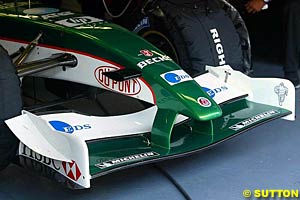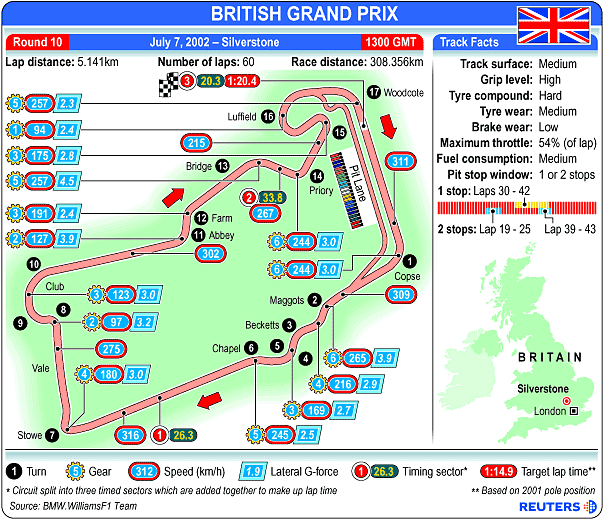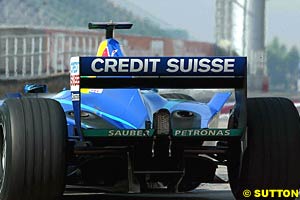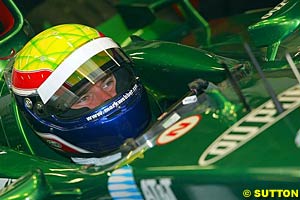
Atlas F1 Technical Writer
The Silverstone track is one all teams are well familiar with. Yet unpredictable weather and a mixed circuit characteristics, the upcoming race could be a true test of ability for many of the teams. Atlas F1's Craig Scarborough analyses the upcoming weekend, as well as the current status of the Championship and the inevitable Silly Season
In its previous layouts Silverstone had a dangerous and super fast reputation, this has been reworked to provide a more varied and safer circuit, particularly with the Woodcote complex ending the lap. However, although much hs changed over the years, Silverstone is one of Formula One's historic tracks, hosting the first World Championship race in 1950. And, located on an old airfield amid the flat expanse of Northamptonshire, Silverstone is also one of the main test circuits used by the teams, and all of the teams already had several days running around the track this year.
The World Championship
With the season now past its halfway point, the Drivers' Championship is looking almost decided at the top: Michael Schumacher can stroll to the title. Here are some simple statistics to reflect his stronghold on the title:
If the lead is beyond reach, then the second place in the standings is almost anyone's to grab, and the battle will intensify between Ralf Schumacher, Juan Pablo Montoya, Rubens Barrichello and David Coulthard - all four now separated by only four points.
Furthermore, McLaren's resurgence is worrying Williams, who have suffered unreliability and tyre problems for several races now. Rubens Barrichello is coming in as the dark horse after a string of retirements in the early season, but it should not be forgotten that one of the reasons he was 'allowed' to win the European Grand Prix was to consolidate his position in the Championship, and Michael Schumacher has been known in the past to expertly assist a teammate (Irvine in 1999).
The Constructors' Championship is less decided - Ferrari have a 45-point lead over Williams. 16 points are possible from a race, so the gap could be easily diminished if Williams lock out Ferrari with a couple of one-two finishes. However, it is more likely that Ferrari will also gain the Constructors' Championship and again Williams should be wary that McLaren are only twenty points behind and have had two-car reliability for a few races now.
Fourth and the lower positions in the Championship are still wide open, with Renault on a lowly fourteen points and with Sauber and Jordan no more than 8 points behind. Lastly, BAR have yet to pull their car into parc ferme higher than seventh. The revised car and improved Honda engines are helping, but with the top teams having reasonable reliability, a points finish for a team like BAR is unlikely without a major incident affecting the race.
Silly Season Update
While there is a focus on the results of this year's World Championship, the 'silly season' for next year is picking up pace.
The top three teams - Ferrari, Williams and McLaren - are almost certain to retain their drivers' line up, but Renault - and more specifically Jenson Button - hold the key to the rest of the driver market.
Button is under option for Renault and Williams next year, but even in the face of his refound speed this year neither team seem keen to hire him. Jaguar are known to be in talks with the Briton, but Jaguar have also tested Fernando Alonso and Mark Webber (both managed by Renault's Flavio Briatore) and have an option to retain both their current drivers.
Takuma Sato looks unlikely to be retained at Jordan in 2003, unless he can help the team find an engine deal or more sponsorship. At the other Honda team, much speculation surrounds BAR and Jacques Villeneuve's salary for next year, while Olivier Panis can expect to continue driving for the team in 2003.
Toyota are another team on the lookout for drivers for 2003 and equally many drivers are keen to join the German based team before they achieve the heights many expect of them. Both Mika Salo and Allan McNish are unconfirmed for next year - although Toyota are likely to exercise an option on Salo - and every driver from Coulthard to Webber has been rumoured to be in talks with them.
Sauber and Arrows seem set to retain their current line-up, while Minardi, as ever, will no doubt alter their driver up inline with their finances.
The importance of these changes is the timing: Renault and Button are expected to announce their position for next year this weekend, and so the rumour mill in Silverstone will be in overdrive.
Testing and development
As with most races this season, all the teams arrive at the weekend fresh from completing several days of testing: Barcelona, Mugello and Monza have all been used as testing venues last week. Mugello in particular is a close match for Silverstone's layout and more importantly a match for its surface, which is critical for tyre testing.
Jaguar have struggled all season with the original front wing and bargeboards, designed for the triple keel raised nose. Jaguar's new set-up - at least in the guise seen at Barcelona - is a three-piece update: front wing, endplates and bargeboards. The sidepods and rear end remain unchanged.
The new two element front wing and curvier bargeboards look particularly Renault-like. This is unsurprising; just as BAR poached a Williams aerodynamicist and ended up with a Williams-like aero package, Jaguar have poached Ben Agathangelou from Renault and ended up with Renault-like front end.
As a result of the aero testing, the new set-up appears to create more space between the car and the bargeboards, a straighter curve in the front wing and front wing endplates that curve in much more between the wheels. Judging from this, it appears the initial Jaguar design stifled the airflow under the nose.
Layout and set up
It's hard to pinpoint Silverstone's characteristics, as it is no longer a succession of fast sweeping bends.
The lap can be effectively split in to the three timing sectors: the opening sector starts on the main straight leading into a flat out corner, then the super fast right-left-right section before the run down the back straight. The next sector is made up of fast runs into medium-fast corners preceded by heavy braking. The last sector is known as 'the complex', as it is made up of several corners and leads back onto the main straight.
The fast direction changes required from the first two sectors place the emphasis on aerodynamic efficiency and a stable car at high speed, but then the second sectors slows down and by the third sector the car demands mechanical grip and supple suspension to negotiate the braking and kerbs around the complex.
The circuit still rewards engine power, even if the throttle is only fully open around 55% of the lap, largely due to the slower last sector. However, despite the heavy braking required at three points on the track, the circuit lacks overtaking opportunities for the race. Momentum is needed due to the loss of aerodynamic efficiency behind the leading car, hence most overtaking occurs in the opening laps or just after a pitstop.
Pit strategy is open; one or two stops will work well on the circuit, but tyre performance and the weather will influence the decision. Weather at Silverstone is always an issue, and even at the height of the British summer rain and wind can interfere with proceedings. Furthermore, as the circuit is in the middle of a flat landscape, the weather changes rapidly, but the precise moment the change of weather hits the circuit can be quite easily predicted. A change of wind speed or direction can upset the set-up of the car's either increasing understeer or oversteer.
Nevertheless, it rained at every test this year at Silverstone, so the teams have good data to base their wet weather set-up on. And, should the weather turn wet, there are now tarmac run offs on several corners to allow the drivers to be let off for any indiscretions.
After the recent hot weather races, Silverstone can be expected to be cooler and therefore Michelin's decision to ease back on their soft compound strategy after the European race needs to be carefully measured for the British climate. The circuit can be hard on tyres, as the track surface is grippy and quite abrasive, but because the circuit is in frequent use the rubber build up on the track should equalize the times between the sessions. However, heavy rain - such as been seen already in the UK this week - can clean the track of the rubber build up and send the tyre degradation figures awry.
A lap of Silverstone with Jenson Button
"I approach the first corner, Copse Corner, at around 295km/h. The entry to this is very difficult because I can't see the apex as I turn in and it is a very quick corner, which I take in fifth gear at around 235km/h.
"The exit will lead down to the difficult Becketts complex, reaching a similar top speed of 295km/h. The first left-hand corner, Maggotts Curve, is taken flat before braking lightly and dropping my speed down to around 270km/h for the next right-hand section.
"After this I need to brake much harder because I need to drop my speed down to around 210km/h in fourth gear for the penultimate left-hand corner, and then lose more speed, changing down to third gear at around 175km/h for the right-hand corner of Becketts.
"The slight left-hand kink, Chapel Curve, which leads onto the Hangar Straight is taken flat, hitting the apex at around 235km/h in fifth gear. Through this complex I will have experienced very high lateral forces both to the left and the right so the relaxation on the Hangar Straight is very welcome.
"At the end of the straight I will reach the maximum speed on the circuit of around 310km/h before once again braking very hard and dropping down to 190km/h in third for Stowe. In the next short straight I will reach around 280km/h in fifth gear before dropping right down to 90km/h in second gear for the slowest corner on the circuit, the left-hander leading into Club Corner.
"Club Corner itself is very difficult and although I will apex at around 130km/h in third gear, I need to be able to get the power on well as I fight the car out of this very long corner. In the run up to the chicane, Abbey, I will once again reach around 295km/h, a similar speed to the pit-straight. For the first part of Abbey I will have to brake hard to 125km/h in second gear, although on a good lap I will hope to take the right-hand part under steady acceleration, apexing at around 190km/h in third gear.
"Ahead of me is one of the most challenging corners on any Grand Prix circuit, Bridge. On a qualifying lap I will definitely take Bridge flat at around 265km/h in fifth gear. Part of the challenge of this corner is that I need to position my car well over to the right to be able to take Priory, the first left-hand corner of the complex, correctly and while doing so I need to get my speed down to 175km/h in third gear.
"I will briefly reach around 215km/h in fourth gear before braking again for the long left-hand corner in the complex, Brooklands, which I will take at 105km/h in second. Almost immediately I am into the last corners, Luffield and Woodcote. The apex speed is similar, but they form one very long right-hand corner, where once again the exit is both difficult and important as I need to get power on smoothly and fight the inevitable understeer to get good speed onto the pit-straight. This should enable me to complete my lap by crossing the finishing line at around 280km/h in top gear."
Team by Team
Ferrari
As Silverstone demands great tyre performance and aerodynamic efficiency, Ferrari can be expected to perform as usual at the front of the field. Their lack of pole positions perhaps reflects the Michelin tyre situation more than the drivers' pace.
Michael Schumacher struggled over his teammate in qualifying on conventional tracks, as he seems to end up working on the set-up throughout the session and unluckily (or perhaps luckily for the race) has technical problems with his racecar.
After his win in Germany, Rubens Barrichello will be up on his confidence this weekend, so a back-to-back win could be more than likely.
The team tested heavily last week, running all four contracted drivers on three circuits for tyre and electronic evaluations. The new, more powerful engine is expected to run in qualifying in preparation for its race debut on a couple of races later.
Williams
Williams have been hard at work testing in Barcelona, the main emphasis - aside from tyres - was the tuning of the traction control electronics to ease the rear tyre wear seen in past races. Engine work has also been carried out and BMW are content the new specification engine raced in Germany will remain reliable. New aerodynamics were also tried, but these aren't expected to constitute a major upgrade for the car, although they will help with the demands of this track.
With the circuit suiting the car and revisions run in testing, Williams can confidently look for a race win in Britain. Both drivers are on top form: Juan Pablo Montoya's 'do or die' mentality is paying off in qualifying and not in the races, while Ralf Schumacher keeps out of the spotlight and is quietly setting about finishing second in the Championship.
McLaren
It is still not clear if McLaren are being flattered by their better use of the Michelin tyres and Williams reliability problems, or whether the Woking-based outfit is back to form. Silverstone will provide a clearer answer, as a technical track demanding both aerodynamics, power and grip, McLaren will have to show all three aspects of the car are up to scratch.
Curiously for a British team, McLaren tested very little at Silverstone this year, preferring Barcelona as a venue instead. This shouldn't affect their hopes too greatly, although they will lack tyre data compared to Williams.
After a patch of problems, Kimi Raikonnen scored a podium result in Germany, and despite David Coulthard's retirement both drivers are more convinced of the MP4/17's pace. Furthermore, although Scottish and living in Monaco, the English track is effectively Coulthard's home race and the crowd will be supporting him for a win.
Renault
The team is still struggling to find the best from the car and break free of the midfield. Silverstone will rate as another one of their best chances.
There have been a few aerodynamic developments in testing and the new traction control will help them find time in the last sector. The car's innate handling qualities, and with emphasis being off outright power for this race, places both drivers in fighting chace - at least in qualifying - should McLaren or Williams struggle.
Jenson Button is another home driver as well as in the middle of the 2003 season rumour mill, so he needs to be careful he doesn't lose his focus on the race weekend as he has been known to do before.
Jarno Trulli is much more consistent of late, and after several testing sessions with the Renault at Silverstone, he should look forward to a good race.
Sauber
While Renault seem to be unable to unlock the car's potential, Sauber seem to be at the limit of theirs.
Jordan
Few teams have a more local home race than Jordan, being based the other side of the road from the circuit. The team have tested frequently on the track, and after a successful test in Barcelona come to Silverstone with an unchanged car. The car is working well despite the problems at the Nurburgring, and Silverstone should suit the car and revised Honda engine well enough to push into the top ten and even beat Renault or Sauber for results.
Giancarlo Fisichella should be over his brain fade in the last race to focus on a better weekend this time around. Furthermore, Fisichella's incident with his teammate probably upset one of Takuma Sato's better race weekends of the year, and while he unashamedly says he only ever goes flat out, Germany showed he took the weekend at an easier rate and found it worked out much better. Silverstone is a track he knows well from British F3 and another well thought-through weekend should see him up with his highly rated and experienced teammate.
BAR
Even after the major update to the car, BAR struggled for balance throughout the Nurburgring weekend. More testing to evolve a set-up that works for the revised car should reap some rewards this weekend. BAR are the most regular testers at Silverstone, often appearing with three drivers and cars for the tests. The revised Honda engine should aid their cause, but realistically they can only hope to be in the mid pack and get both cars to the finish.
Jaguar
After a season of excuses while waiting for the aerodynamic update, Jaguar have to bite the bullet. The apparently simple update to the front wing and bargeboards has taken since January to develop. If the new set-up works, questions will be asked why did it take so long for the update. If the new package fails, then heads will roll and Jaguar will be sent even deeper into the turmoil they endured for the past three years.
If faces from the technical department will disappear following any disappointment, then so will at least one driver. Eddie Irvine has been vocal as ever on his lack of motivation with the off-the-pace car. Whether he jumps off or is pushed out for next year may be difficult to ascertain.
Toyota
After their success running up to the mid season, Toyota have slumped a little in recent times. Pace on more mechanically demanding tracks and reliability has highlighted where the team are falling short. The duality of Silverstone's technical demands will place Toyota high on the time sheets in the faster first two sectors of the lap, but they will need to master the kerbs and understeer found in the slower last sector to succeed in Britain.
Both drivers are overdue for a strong race, although technical maladies for Mika Salo and physical problems for Allan McNish afflicted their race in Germany.
Arrows
"Struggle in qualifying and promise in the races" seems to be the story at Arrows this year. With a customer Cosworth engine and Bridgestone tyres Arrows were never going to set the grid on fire. But their pace early in the race on similar fuel strategies, still suggests there is a better result trying to get out. Moreover, luck hasn't been on their side: first lap incidents and numerous fuel rig problems have wrecked too many races. Silverstone can again promise a good result for Arrows - perhaps a top-ten grid slot or race finish if luck runs with them.
Minardi
Mark Webber's confidence will be up after his high profile test for Jaguar, but he will still return to the slowest car on the grid, knowing his main competition will be from his much less rated teammate Alex Yoong.
With most of the teams being based in the UK, Formula One is coming home this weekend for Round 10 at Silverstone. England is home to seven of the eleven teams and three of the eight engine suppliers - even Honda and Bridgestone use it as the distribution facility for the European races.
 But testing was about more than tyres this week: Jaguar unveiled their new front end aero packages after months of waiting, while Renault tested a new aero set-up, as did Sauber with a new diffuser.
But testing was about more than tyres this week: Jaguar unveiled their new front end aero packages after months of waiting, while Renault tested a new aero set-up, as did Sauber with a new diffuser.

 All season the car has been near the pace but has never really changed its position in the field. When the Bridgestone tyres are working better, the team up their pace, but the lack of visible development suggests that Sauber are going back to their old ways. A new diffuser for this race will not add grip at the front, where it's needed, and Sauber are only likely to pick up a point if the leaders suffer in the race.
All season the car has been near the pace but has never really changed its position in the field. When the Bridgestone tyres are working better, the team up their pace, but the lack of visible development suggests that Sauber are going back to their old ways. A new diffuser for this race will not add grip at the front, where it's needed, and Sauber are only likely to pick up a point if the leaders suffer in the race.
 With only two days of testing at Silverstone, Minardi come to the weekend with a lack of data over the competitors. Along with the lack of power and poor compliance in the suspension, Minardi can't expect anything different from the weekend.
With only two days of testing at Silverstone, Minardi come to the weekend with a lack of data over the competitors. Along with the lack of power and poor compliance in the suspension, Minardi can't expect anything different from the weekend.
Please Contact Us for permission to republish this or any other material from Atlas F1.
|
Volume 8, Issue 27
Atlas F1 Exclusive
Interview with Guenther Steiner
Jo Ramirez: a Racing Man
Articles
Trust and Trulli
British GP Preview
British GP Preview
Local History: British GP
Facts, Stats & Memoirs
Columns
British GP Quiz
Bookworm Critique
Elsewhere in Racing
The Grapevine
> Homepage |